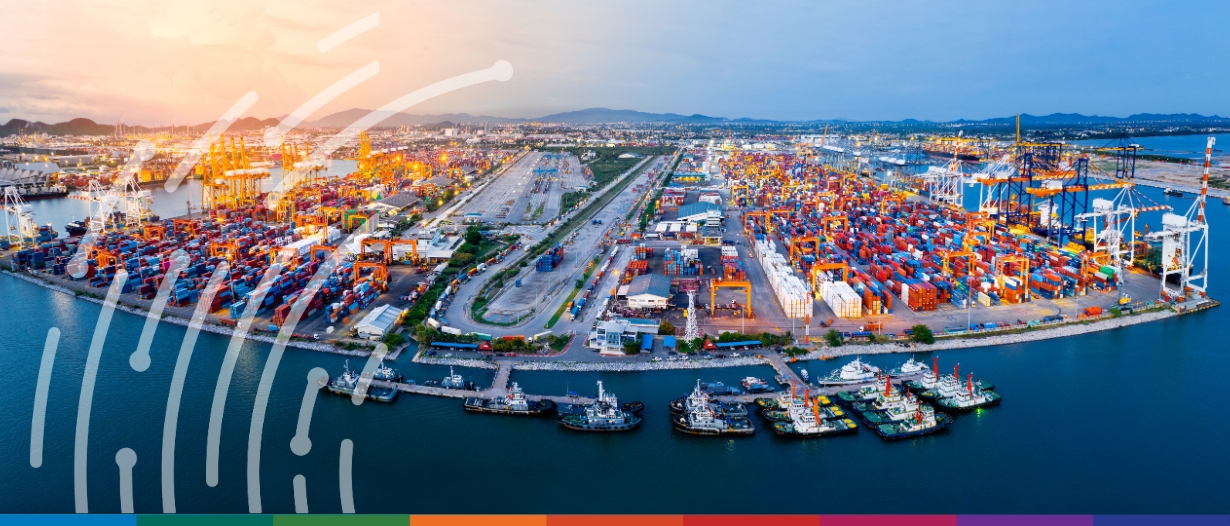Estimated reading time: 6 minutes
There is a saying that a stable table needs a minimum of three legs. In trade finance, we can apply this to digitalisation.
To successfully digitalise Bills of Lading, the three necessary foundations are law, standards and technology. Without their proper application, any eBL SaaS platform, notwithstanding the attractiveness of the business model, is unstable. Without their proper application, the trade finance industry is not able to accept and enforce such eBl as collateral.
Legality: Wait for a global adoption or…?
Despite more than 15 years of effort, the digitalisation of Bills of Lading (BL) transactions remains limited, mostly confined to the liner industry. This can be attributed to two key factors.
Firstly, the wide range of regulatory and local practices surrounding BLs on a global scale creates challenges. Secondly, the management of eBLs has primarily been carried out through contract-based “clubs” (Saas providers), where the use of eBLs is governed by a complex and lengthy legal and procedural rulebook.
Users are required to agree to this rulebook in advance, making the onboarding process complex, and the contractual validity of eBLs questionable. Consequently, the trade finance sector has been hesitant to adopt eBLs, let alone use them as collateral.
However, there is progress being made in key jurisdictions for international shipping. Singapore has already enacted laws based on the MLETR, and the UK is well on its way to passing a similar bill, the ETDB, in the coming months.
These laws aim to create an environment for law-based digitalisation of basic paper trade documents, moving away from the current contract-based approach. Nevertheless, efforts must be made to ensure that such legal frameworks are recognised globally by other jurisdictions.
There are two pathways to achieving global recognition for eBLs:
- Wait for a sufficient number of countries to adopt laws and policies that allow for the recognition of eBLs universally,
- Utilising existing legal regimes and international private law solutions to create eBLs that are natively valid and globally recognisable. This alternative is already available based on either the Singapore Electronic Transaction Act or, in the near future, the UK ETDB.
It is crucial to acknowledge that the majority of trade, including its finance, maritime freight, and Bills of Lading, is predominantly governed by a handful of laws and jurisdictions. By embracing the available legal frameworks, we can pave the way for eBLs to gain legal validity and acceptance in international trade.
The industry’s acceptance of eBLs in Sale and Purchase, and Charter Parties contracts is not only a necessary step, but also a significant milestone in achieving financial institutions’ recognition and acceptance of these electronic documents.
It is encouraging to witness numerous financial institutions taking proactive measures by engaging in comprehensive legal due diligence to test the legality, validity and enforceability of next-generation eBLs as collateral.
Amidst this ongoing due diligence, there are promising opportunities to harness the potential of valid eBLs in specific trade scenarios. Particularly, in trades where the presentation or collateralisation of traditional BLs is not a requirement under financing agreements, such as sale and purchase contracts with open payment terms or transactions facilitated through receivable financing.
It is noteworthy that certain trades have already witnessed the acceptance of electronic documents by authorities on both sides for the purpose of customs clearance, further supporting the adoption of eBLs.
By capitalising on these emerging opportunities and actively embracing the use of eBLs in relevant trade contexts, the industry can foster wider acceptance, facilitate smoother trade financing processes, enhance operational efficiency, and promote greater transparency across global trade operations.
Standardisation: Where are we?

The standardisation of data, document templates, and processes, developed by the industry for the industry, is progressing rapidly, as confirmed by the ICC report “Key Trade Documents and Data Elements” in March 2023.
This report focuses on the standardisation of data and its sharing, presenting sets of data content for seven fundamental documents in international trade, including the Bill of Lading. However, it is important to recognise that sharing data contained in a negotiable Bill of Lading differs from the actual transfer of a document that represents value and assets.
The sharing of data, also known as systems’ interoperability, is an acknowledged requirement between different information technology systems and software applications. This interoperability is achieved through established Electronic Data Interchange (EDI) or increasingly popular Application Programming Interfaces (APIs) for cloud-based Software as a Service (SaaS) solutions.
Various systems, such as B2B (Transport Management Systems, ERP, Treasury, Accounting), and B2G (government and its agencies), require the exchange of standardised data, irrespective of location, size, software platform, or vendor while maintaining privacy and confidentiality.
The recent FIATA initiative, “A Charter For Protection And Governance Of Data In International Trade,” is commendable in its efforts to standardise the legal terms governing data sharing among digital supply chain service providers.
On the other hand, the transfer of value and assets under a negotiable Bill of Lading entails distinct legal requirements, involving compliance with concepts of document possession, use, and transferability. Cloud technology, blockchain, and APIs are insufficient on their own to establish native legality and enforceability for electronic eBLs and their transfer.
Consequently, while the law introduces reliability requirements for eBL SaaS systems, it is the responsibility of the industry to develop standards governing eBL possession, transferability, the ability to endorse, and other market or trade-specific processes. Achieving consensus and establishing industry-wide standards in these areas will be crucial for the successful implementation and acceptance of eBLs within global trade.
eBL: One size does not fit all
Whilst the standardisation of Liner BLs and their processes has seen significant progress by DCSA, substantial work remains for other trades with distinct procedural and BL life cycle differences.
BIMCO issued its first standard for eBLs in July 2022, and it is hoped that their efforts will continue. Different types of eBLs require varying definitions of use, albeit the same definition of transferability. Varied requirements for real-time data and visibility will inevitably lead to different system applications. Nevertheless, the underlying concepts of law and core standards should be universal.
Considering market expectations of eBL’s native legality (law-based versus contract-based solutions) and the current status of standardisation initiatives, it is challenging to imagine a robust, safe, and scalable eBL transferability between first-gen eBL service providers. Especially when their SaaS solutions were built prior to the adoption of relevant law, in the absence of any standard and with various technology applications.
Whilst technology is capable of performing complex, legal, multiparty agreements necessary to create such solutions, the programmes did not scale and have not attracted much support from trade finance.
An alternative is to support next-gen SaaS solutions offering natively valid, law-based eBLs without cumbersome and complex legal side agreements. Another option is to actively develop “industry for industry” standards for respective eBL use cases and support those eBL service providers that adhere to such concepts.
The above may initially lead to a creation of an asymmetric, interoperable environment where the primary advantages go to the first, central provider. But if such a solution is in the immediate economic interest of all eBL parties concerned, other eBL service providers may tacitly agree to the terms and conditions of such standards.
Technology: Not an obstacle!
During the recent Commodity Trading Week in London, it was unanimously acknowledged that the seamless and sustainable implementation of secure technology is no longer a hindrance.
The integration of an intuitive interface with a user-friendly SaaS Services Agreement, operating under an intelligent business model that prioritises data privacy, offers practical solutions to real-world challenges. This amalgamation of services on a unified platform is set to bring significant advantages to the industry.
After years of anticipation, the trade financing industry now has compelling reasons to be enthused, as all the necessary prerequisites for the utilisation and collateralisation of eBLs are in place. We are on the cusp of a breakthrough.

































